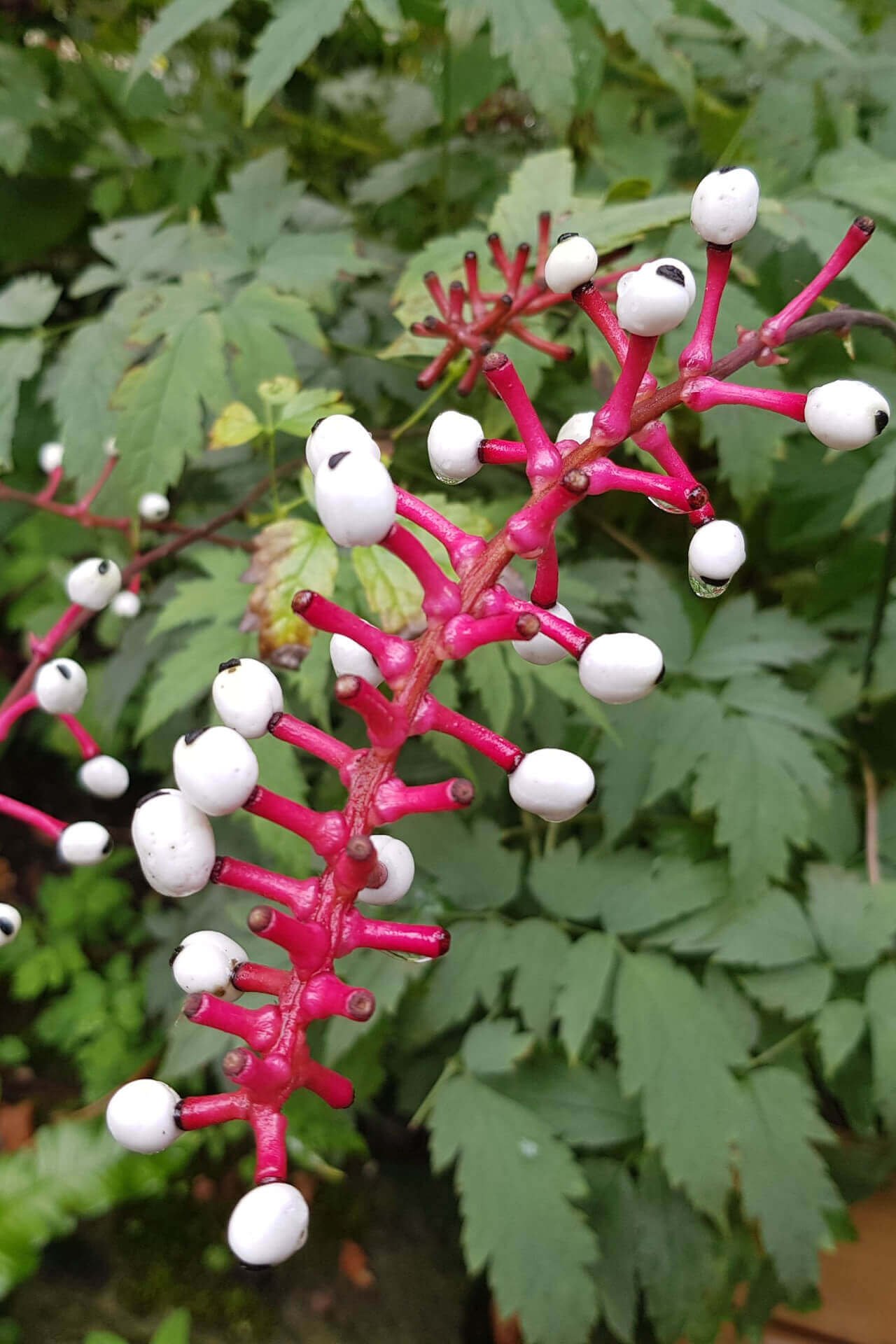
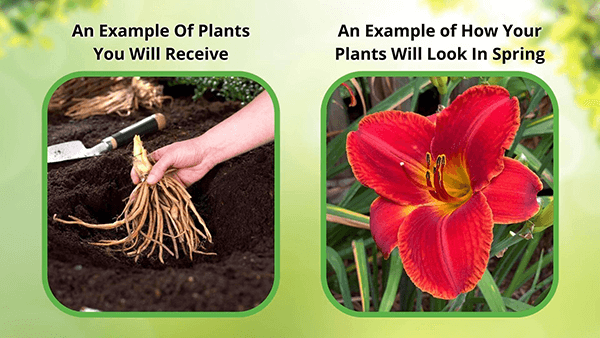
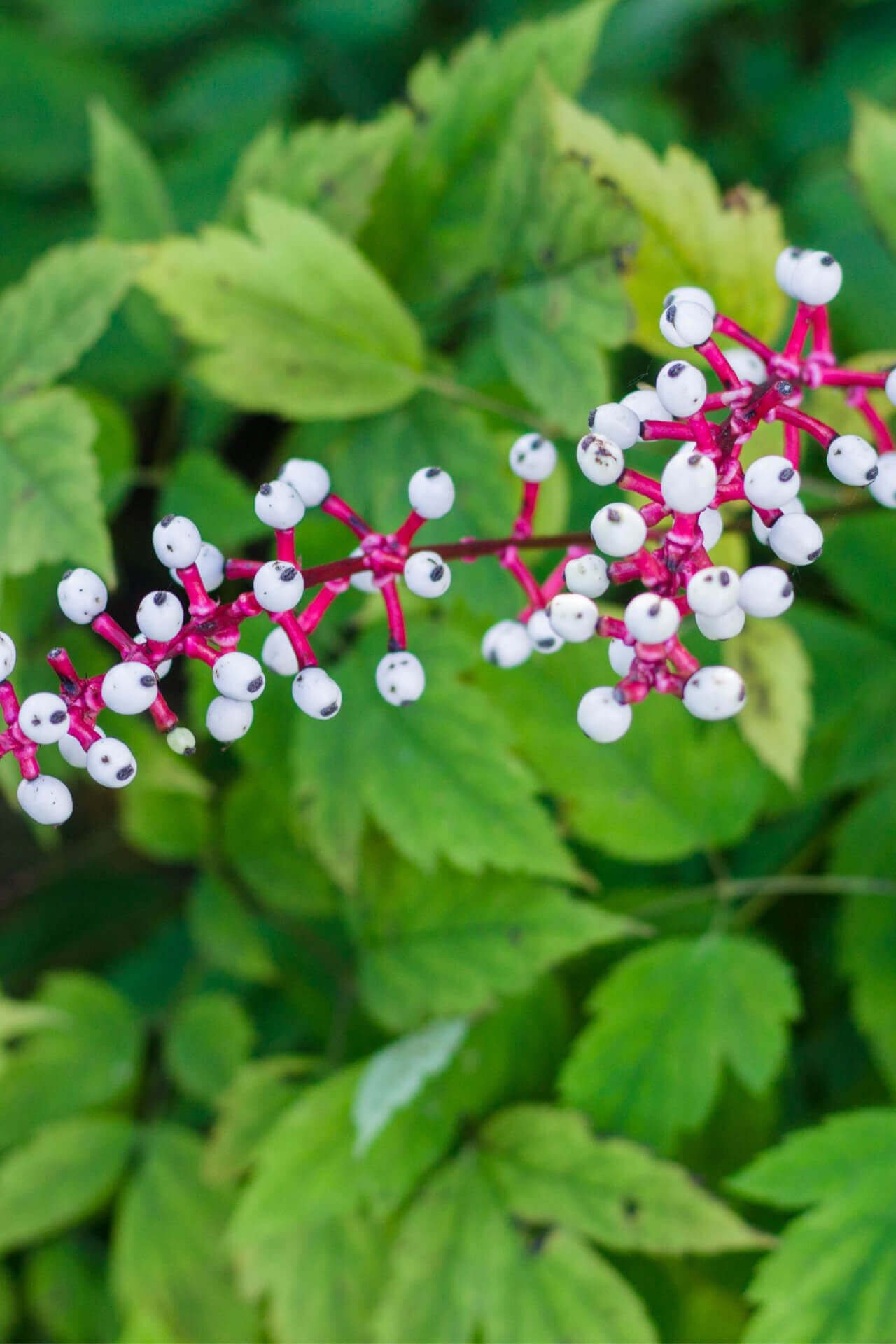

White Baneberry
Unique, eye-catching berries
Tolerates shade well
Attracts birds and wildlife
Thrives in
ZONE 3ZONE 4ZONE 5ZONE 6ZONE 7ZONE 8This plant ships:
Ships Week of May 19th1 Year Guarantee on all plants
White Baneberry - Actaea pachypoda
The White Baneberry, or Doll’s Eye plant, is a bold, eye-catching plant. It gets its name from its pure white berries with perfectly round, black dots in the center, like a doll’s eye. The unique plant is native to North America and found commonly in the eastern and midwest areas of the United States in woody areas. The bold, ornamental foliage fills out space in your woodland garden, while the fluffy white flowers provide spring interest before the berries grow in the summer.
Plant Details - White Baneberry
Family: Ranunculaceae
Light Requirement: Full or partial shade
Water Needs: Moderate
Height: 1-3 ft
Spread: 2-3 ft
Soil Preference: Loam rich, Moist
Bloom Time: Spring
Flower Color: White
Wildlife Value: Bee pollination, Birds spread the seeds
Notable Characteristics - White Baneberry
White Baneberry is a unique perennial herb that flowers in spring, growing delicate clusters of white flowers, with hair-like petals growing from the center. In summer, the flowers die out and small white berries grow in their place. The thick, woody, red-brown stalk becomes almost bulbous towards the top, and turns a bright fuschia where the berries grow. The black-dotted berries are highly toxic to humans and most animals, causing cardiac arrest or even death when ingested. The name “Baneberry” gives a clue to its poisonous nature, as ‘bane’ refers to something that causes death, or deadly poison.
Landscape and Maintenance
Despite its toxicity to humans, White Baneberry is not poisonous to many birds, who eat the berries and distribute the seeds. The flowers give off no nectar, but are pollinated by short-tongued bees, flies, and beetles. The plant is tolerant of shade and drought resistant, making it a very resilient native. It prefers the rich, moist soils of woodland areas and shaded groves, and would be right at home in any native garden. This unique plant is a real conversation piece in any garden, as its slightly off-putting yet beautiful image is sure to get the neighbors talking – just make sure not to eat it!
This Is How Your Plants Will Look upon Delivery
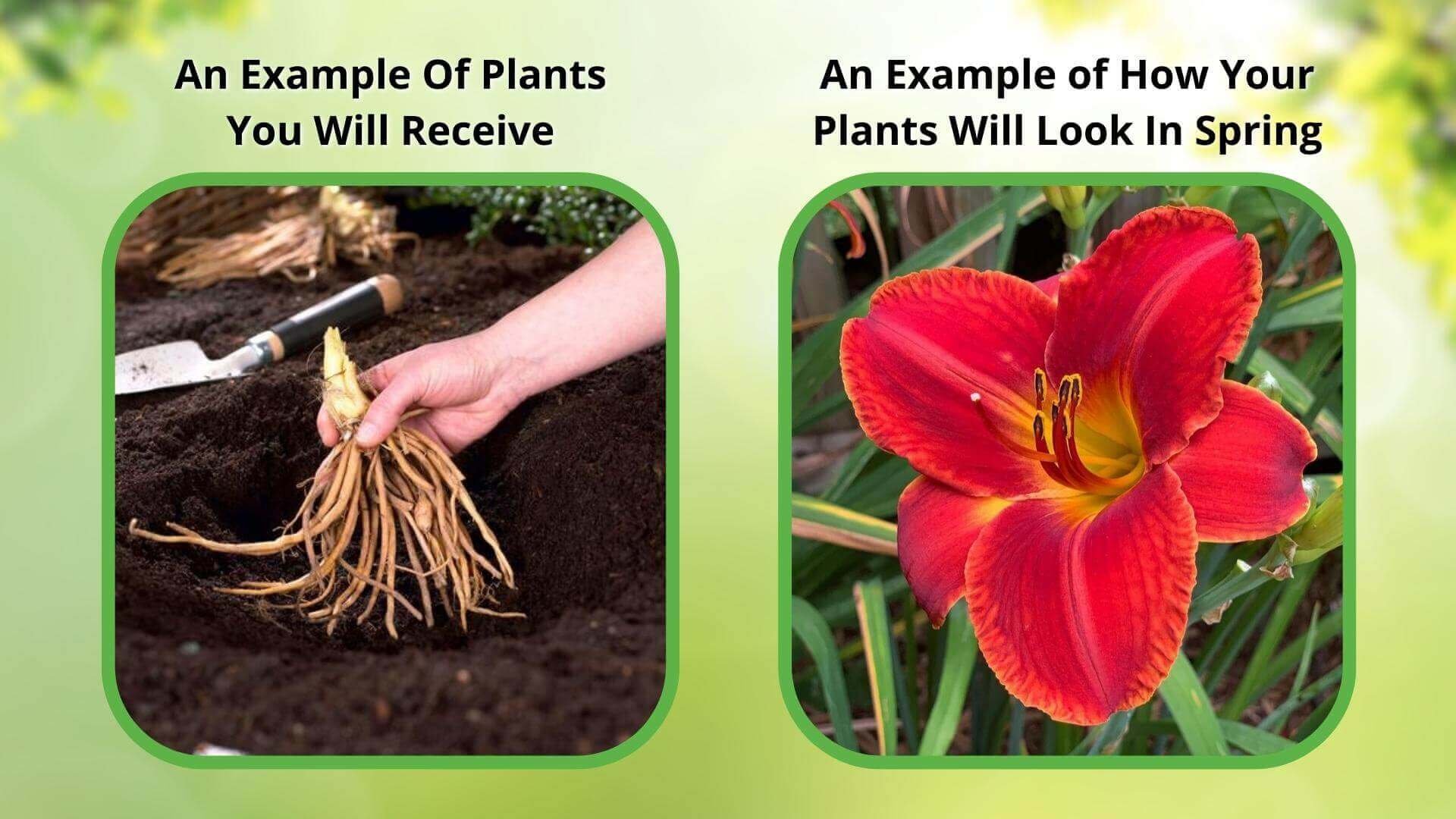
Bloom Season
Summer
Bloom/Foliage Color
White
Height at Maturity
Over 12"
Care
Baneberry 'Doll Eye' thrives in well-drained soil with consistent moisture. Regular watering is essential, especially during dry spells. Fertilize annually in spring to support growth. Protect from pests like aphids and scale by checking regularly and treating them as needed.
Plant Reproduction
Baneberry Doll Eye spreads by self-seeding and by birds eating its berries
Shipping date depends on the date displayed and chosen when you order from the product's page.
We only accept returns on plants verified dead. If you think your plants have died, we offer a 1 year warranty, please use this File a Claim Link to verify dead plants and start with return warranty process.





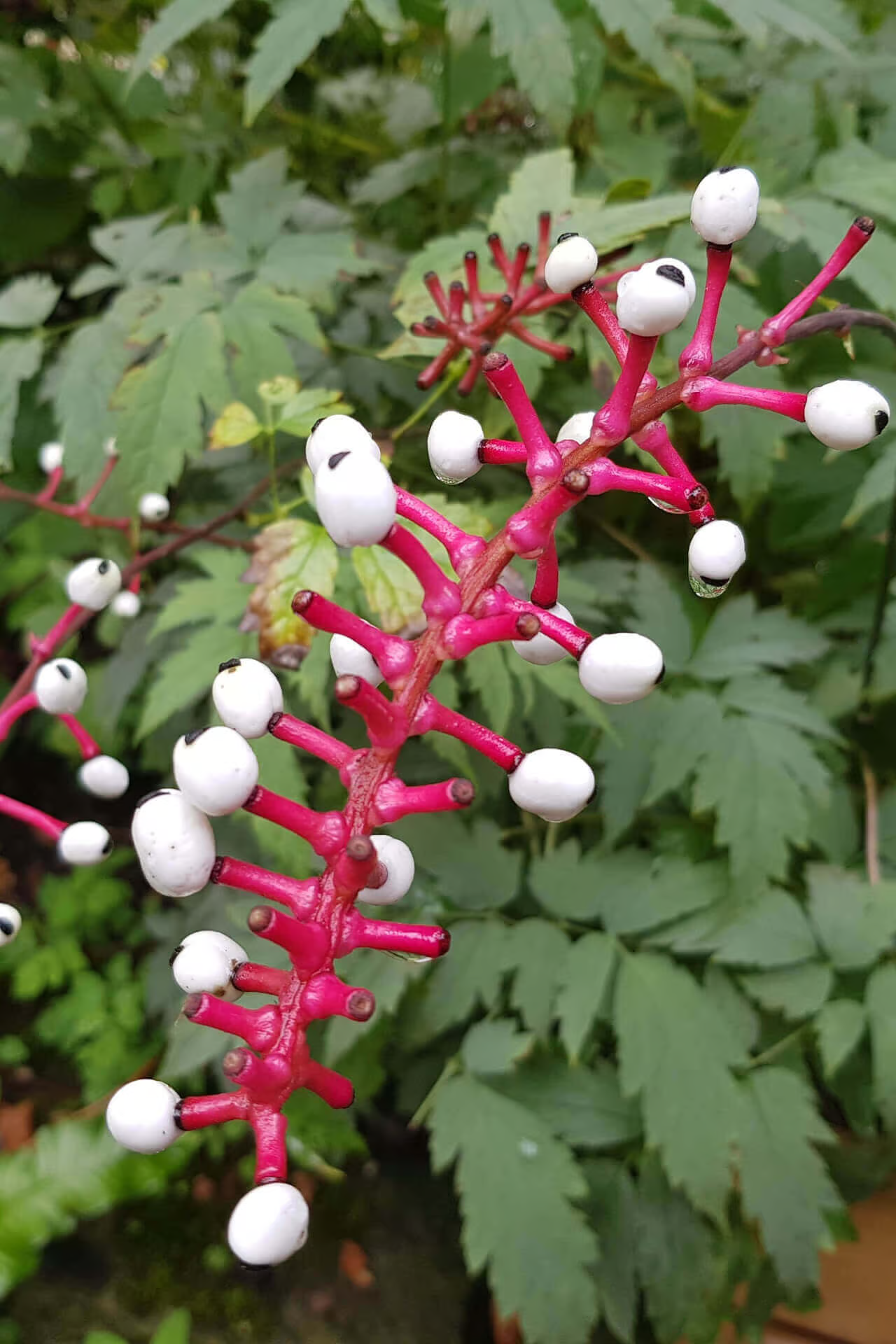
Distinctive Garden Accent:
Its unusual and attractive berries make Baneberry Doll Eye a standout feature in any garden design, offering a touch of whimsy and sophistication that’s sure to impress visitors.
Unique Berries:
Baneberry Doll Eye stands out with its distinctive white berries that resemble little eyeballs, creating a dramatic and whimsical focal point in your garden.
Pollinator-Friendly Perennial:
Actaea pachypoda is a broadleaf deciduous perennial with lush green foliage. It blooms with white flowers in spring and summer, followed by striking white fruit. This plant attracts bees, birds, and butterflies, making it an excellent addition to pollinator gardens.
Low Maintenance Perennial:
Actaea pachypoda, commonly known as white baneberry, is a hardy, long-lived plant that forms a sizable, multi-stemmed clump of attractive, dissected foliage. In early summer, it features clusters of small white flowers, which mature into striking white fruit with a single black dot by autumn.
Caring Tips
How do I care for my White Baneberry?
Each box contains detailed care instructions and information about your product. But here's the basics.
Care Tips
Baneberry 'Doll Eye' thrives in well-drained soil with consistent moisture. Regular watering is essential, especially during dry spells. Fertilize annually in spring to support growth. Protect from pests like aphids and scale by checking regularly and treating them as needed.
Light Requirements
Baneberry Doll Eye thrives in partial to full shade. It prefers low to moderate light conditions, as too much-unfiltered sunlight can cause leaf burn and hinder growth. Ideal locations include shaded woodland areas or the edges of forests.
Hardy Planting Zones
3 • 4 • 5 • 6 • 7 • 8
Header
Use this content to share information about your store and products.
Frequently Asked Questions
How often should I water my plants?
How do I know if my plant is getting too much or too little sunlight?
What should I do to prepare my plants for winter?
What are the signs that my plant needs fertilizing?
How can I prevent pests from damaging my plants?
How do I choose the right plant for my climate zone?






